User adoption is one of the most critical factors in SaaS success and growth. Short term, it’s integral to converting trial users to paid users. And long term, it’s essential for customer retention and preventing excessive churn.
In this post, we’ll explain the fundamentals of user adoption strategies and some specific ways you can use them to acquire and retain more SaaS customers.
What is a User Adoption Strategy?
User adoption typically involves SaaS companies trying to accomplish three main goals.
- Getting free users to become paid users
- Getting paid users to adopt the product even more/upselling to paid users
- Maximizing user retention for your digital platform
A user adoption strategy aims to accomplish these goals in several ways. These include streamlining onboarding, maximizing productivity, creating a great customer experience, and encouraging customers to commit to using a product long-term.
In short, a user adoption strategy looks for ways to help customers get the most out of a product. This ensures that they’re satisfied and want to keep using it.
An effective customer adoption strategy should be comprehensive and address the needs of both new users and existing users to create a smooth experience from start to finish.
For a new user, a SaaS company will primarily focus on onboarding, quickly getting the user up to speed, reducing the learning curve, and establishing value.
For an existing user, they’ll focus on providing a continually positive experience while offering ongoing improvements to set the stage for customer success and make disruption-free iterations.
Now that we’re clear about what a product adoption strategy entails and its purpose, let’s discuss seven specific techniques to use to increase your adoption rate.
7 User Adoption Strategies
1. Make Onboarding Seamless
Let’s start from the top. One of the first factors a new customer (free or paid) will consider when deciding whether to stick around long-term is the onboarding user experience.
If it’s smooth and they can comfortably get their bearings and learn the basics of a new software, this creates a positive first impression. On the other hand, if it’s clunky and frustrating, this sets a negative tone right out of the gate.
For perspective, a Salesforce study found 70% of active users said “understanding how to use products and services is very important to winning their business.”
For that reason, you’ll want to double down on new technology onboarding and make sure it’s seamless while following best practices.
Here are some ways to make this part of your adoption strategy:
- Send each new user an automated email welcoming them to your SaaS company and new system.
- Have one of your employees reach out to each new customer (use managed services if necessary).
- Build a learning management system that includes detailed onboarding tutorials, software walkthroughs, and answers to FAQs.
- Assign each new user a customer success manager.
- Create a simple way to provide user feedback through different mediums such as chat, email, phone, and social media.
- Offering customer stories to showcase how other SaaS companies successfully implemented your product.
That’s just the tip of the iceberg, but this should help the customer journey get started on the right foot.
2. Analyze Customer Segments
The more you know about individual customer segments, the better able you’ll be to find new customers through proven marketing channels and retain a larger percentage of your existing customer base.
Say, for example, converted customers you acquire through a drip campaign have a higher user retention rate than those who you acquire through social media ads. Or, say there’s a higher churn rate among mobile customers than desktop users.
Using behavioral segmentation on a product analytics software tool like Woopra can provide you with a bird’s-eye view of each segment.
You can figure out how users engage with your product to help fix problem areas, boost customer acquisition, increase customer success, and lower churn.
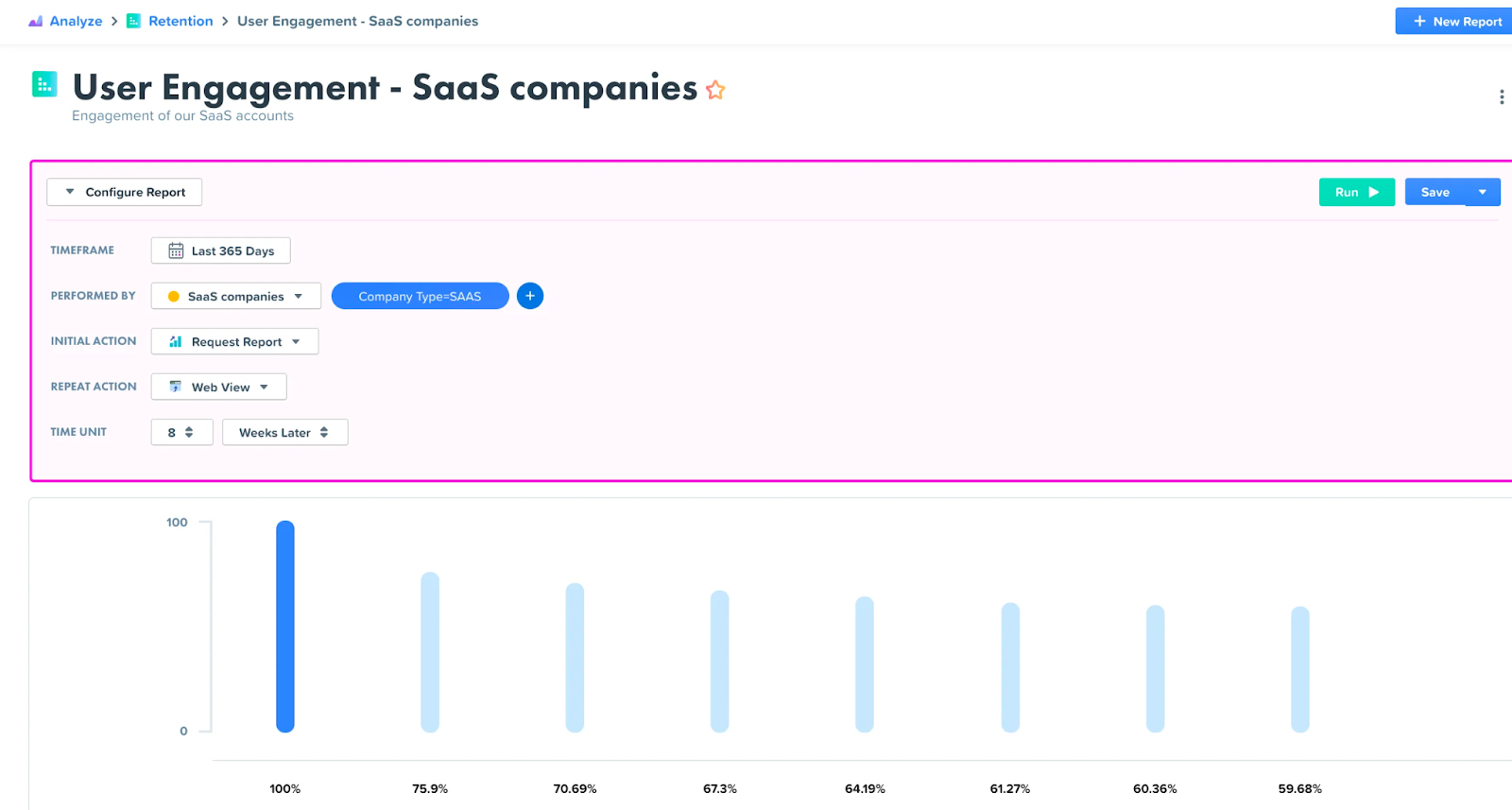
The more data you gather, the more clear your insights will become, and the better you’ll understand each customer segment, as well as your customers collectively as a whole.
And when compared to other SaaS companies who skimp in this department, you’ll have a significant competitive advantage which can greatly enhance your overall adoption strategy.
3. Track Individual User Journeys
No two user journeys are alike. Each involves its own unique touchpoints that impact user experience, determine whether a trial user becomes a paid user, decide how long a paid user continues using your product, and more.
By tracking individual user journeys, you can objectively analyze how each user navigates throughout these touchpoints to better meet their needs and ultimately boost digital adoption.
One example is determining how many users convert from Google Ads, where you look at how many went from your landing page to your pricing page to your signup page, and so on.
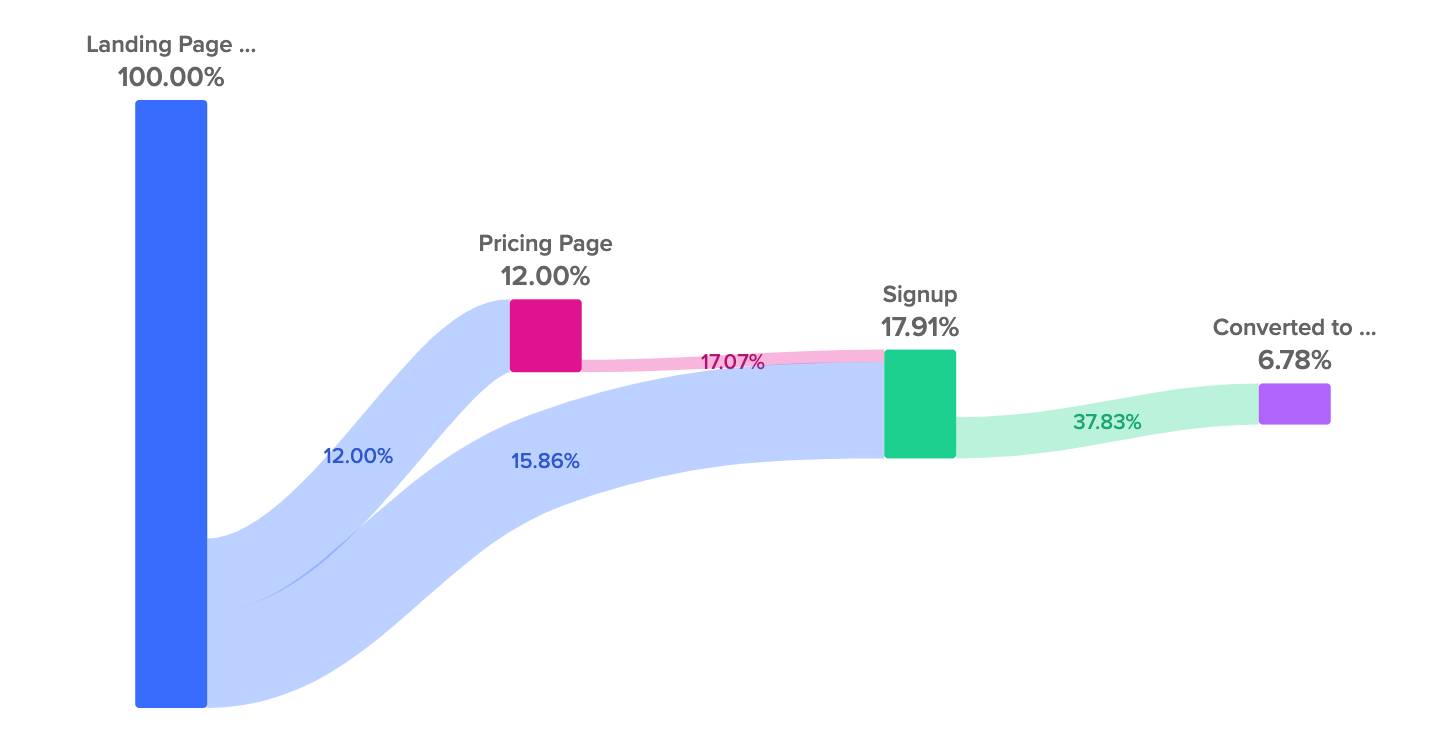
Another example is analyzing what impact emails have on conversions, where you see how many new users that sign up check out your onboarding email and, subsequently, use your product.
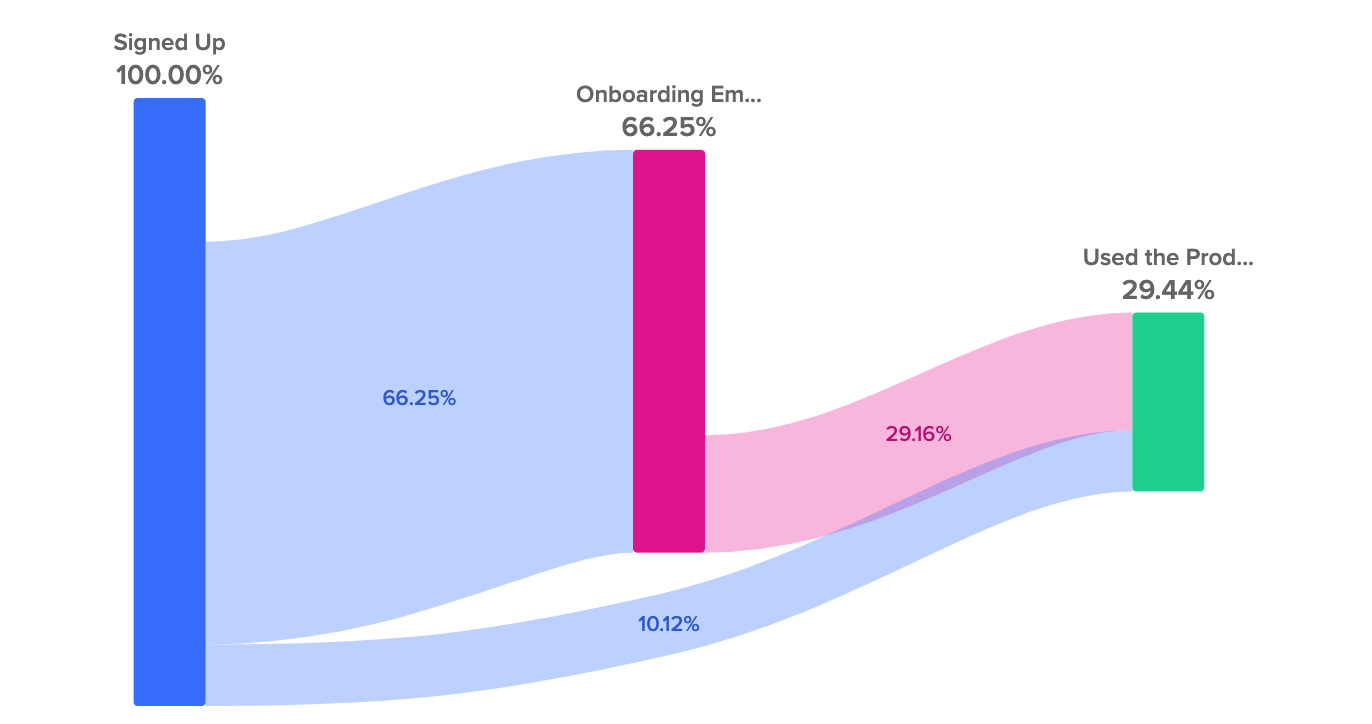
And a final example would be seeing how live chat affects conversions. This includes where you look at how many first-time visitors start a live chat and go on to sign up for a free trial, as well as what percentage upgrade to a paid version.
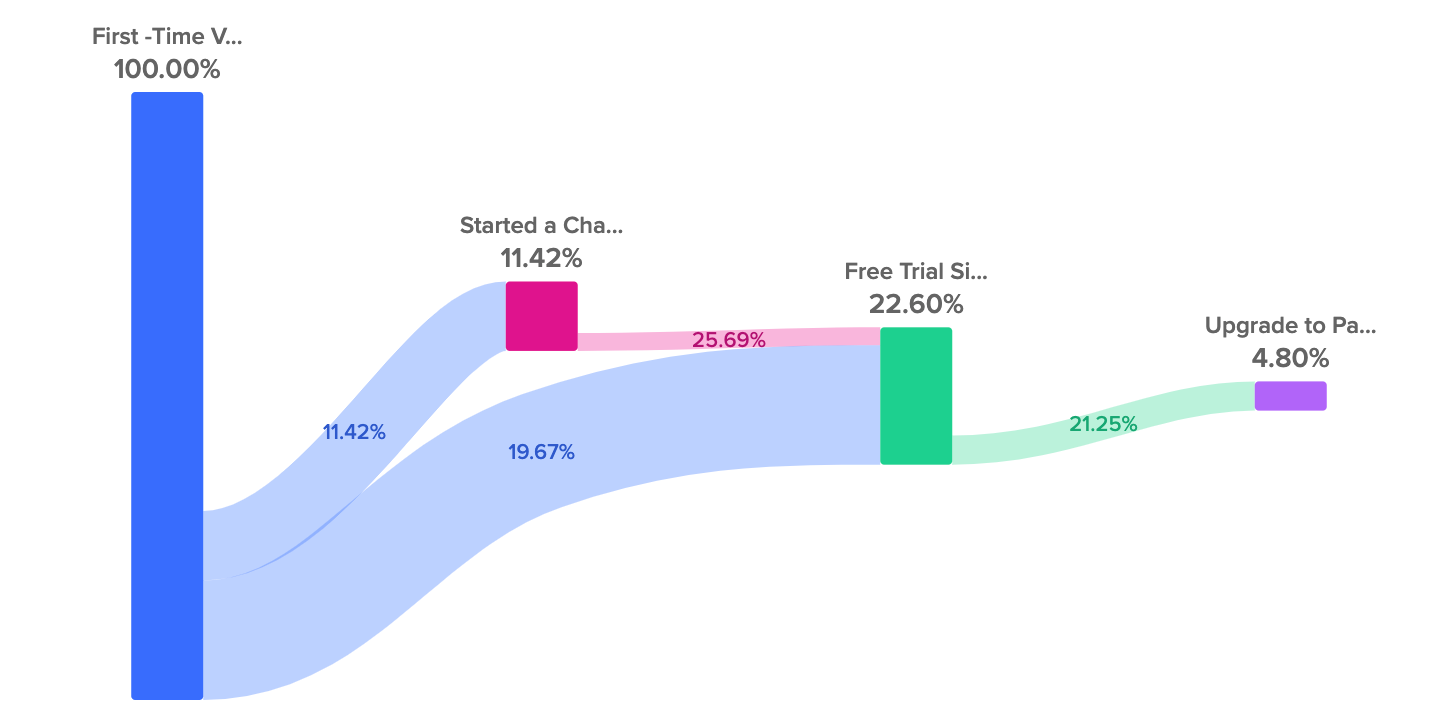
The possibilities are endless, and you can learn about more user journey applications here and how they play into your digital adoption strategy.
4. Find Friction Points
A friction point is anything that diminishes user engagement or retention, which, in turn, leads to unnecessary churn. While it’s impossible to completely eliminate friction points, they’re certainly something you want to proactively manage and make consistent efforts to minimize.
Here are a few examples of some common friction points:
- A complicated learning management system that causes a new user to struggle during onboarding
- Overly lengthy product tours
- A complex or glitchy login process
- Slow loading software
- Poor functioning collaboration tools
- Bugs with new feature adoption
- Sluggish customer service
- Digital transformation initiatives that create downtime
So how do you go about finding friction points? There are two main ways.
First, you can unearth a lot of information by examining customer complaints and chatting with your customer service team. Usually, “the low-hanging fruit” will be obvious where major friction points will naturally emerge.
You can also connect the dots by using churn reports to identify exactly when and why you’re losing customers.
This will help you prioritize your efforts so you can address the biggest issues first and gradually work your way through the other friction points until you have a seamless customer experience from start to finish.
With a tool like Woopra, you can even segment churn reports to gain a holistic perspective of quality churn rate, revenue churn rate, customer churn rate, and other user adoption metrics to see the big picture.
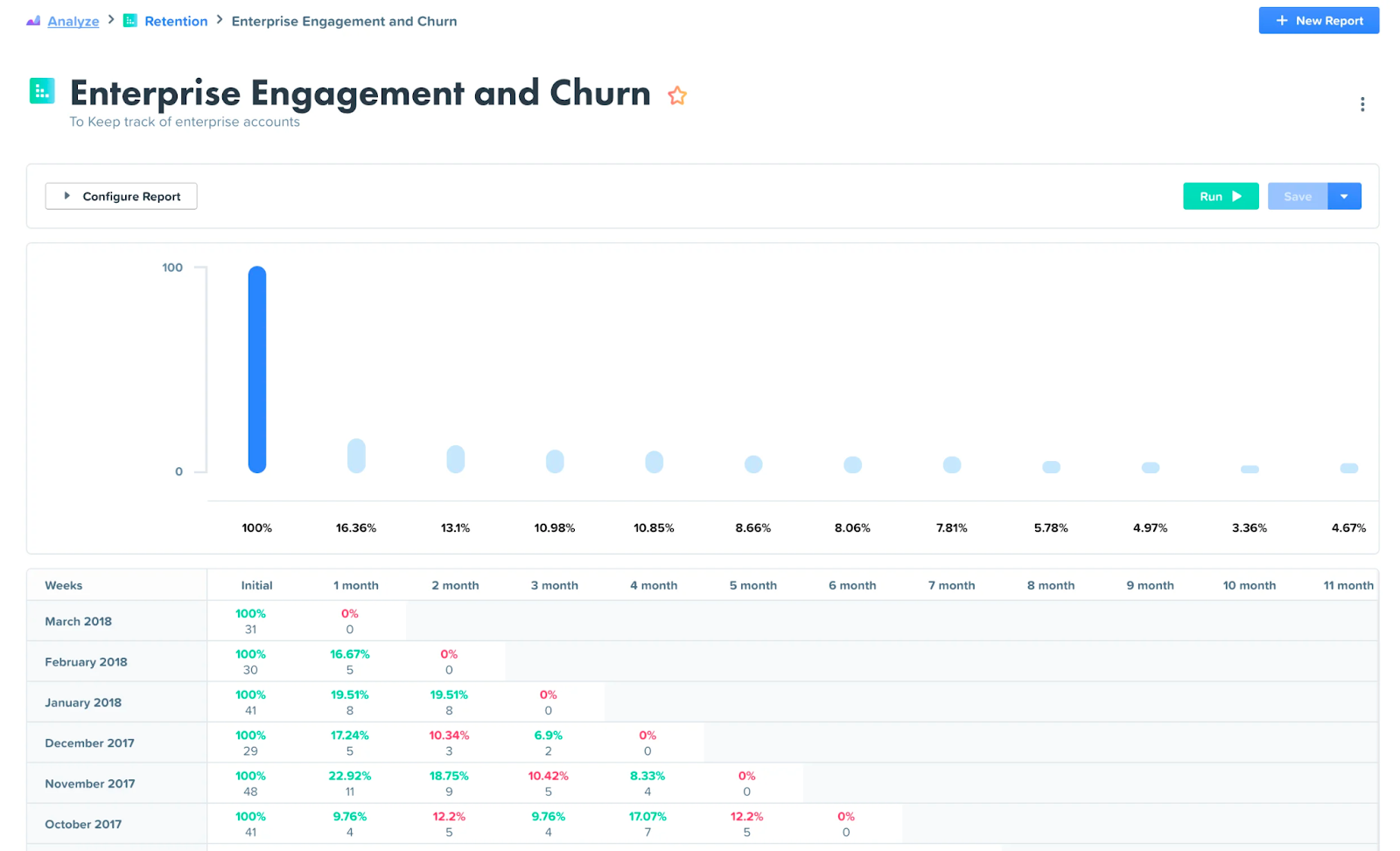
5. Conduct User Research
Another key part of an adoption strategy is gaining a clear understanding of user behavior to see how an end user interacts with your software.
Some specific areas of focus include identifying how long they spend on your platform, the features they use the most, and where they exit.
One of the best ways to conduct user research is with user behavior analytics which aggregates a large body of behavioral data and condenses it in a way that’s easy to understand and spot patterns.
Not only can these analytics help you pinpoint weaknesses in your software and customer pain points, but they can also help you determine your strengths so you can capitalize on them even more.
An important area to focus on with customer research is the sales process when you’re attempting to convert free users to paid users.
Maybe, for instance, you’re getting a high volume of people signing up for the free version of your software but only a small portion are upgrading to paid.
This would mean you would want to optimize your lead nurture touchpoints to raise conversions and increase product adoption.
Besides that, other critical areas you can better understand from user behavior analytics are low usage times and high exit rates.
6. Gamify the Experience
Gamification, which involves incorporating game-playing elements like point scoring, badges, and leaderboards has basically become ubiquitous in recent years.
From marketing to media to education to retail, countless industries are incorporating gaming to improve engagement and create a more rewarding customer experience and also increase employee adoption. And SaaS is no exception.
There’s a strong body of research that proves gamifying the user experience can have a positive impact. A study by TechValidate, for example, found that “about 30% of companies that use gamification were able to improve registration conversion rates by over 50%.”
Besides that, “customer engagement through gamification can lead to a 15% - 40% increase in lifetime value.”
By tapping into the natural human enjoyment of fun and competition, gamification can increase your user adoption rate while boosting user engagement every step of the way.
In terms of specific elements to incorporate, here are seven of the most common for better end-user adoption.

Source: Learn Tech
7. Automate Customer Support Notifications
Research has found that over 65% of people have higher customer support expectations than they did 3 - 5 years ago. Further, excluding products and pricing, 83% say quality customer support is the number one factor they consider when deciding whether or not to buy.
So we can’t stress enough the importance of getting your customer support right, as it’s a huge factor in boosting software adoption — both for converting free users to paid users and unlocking upselling opportunities with paid users.
A great way to achieve that is to automate your customer support notifications, particularly through Slack and email. Doing so allows you to efficiently reach a large volume of customers and keep them in the loop without putting a strain on employee resources for a win-win.
And in the long run, it can be huge for building stronger customer relationships, increasing customer satisfaction, handling change management, and deepening loyalty.
Getting the Most from Your SaaS Product with The Right Digital Adoption Strategies
To recap, a high product adoption rate offers several benefits, like converting more free users to paid users, reducing churn, and unlocking upselling opportunities.
By focusing on each adoption strategy mentioned above, you can cover all the bases and create a rewarding customer experience at all stages for better user adoption success.



